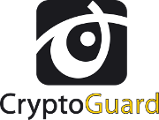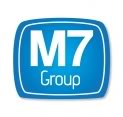
iKS-Consulting has released its analysis of the Russian pay TV market at the end of the first half of 2014. Compared with the same point in 2013, the number of pay TV subscribers increased by 10% to exceed 36.4 million, with IPTV growing fastest. Household penetration was 65%, up from 59% a year earlier.
In the country as a whole, there were seven operators with a subscriber base in excess of 1 million households. Tricolor TV had the largest reach with over 10.5 million subscribers. In Moscow, the leading pay TV operator was Rostelecom with more than 3.2 million subscribers.
Operators with a subscriber base of over 1 million – Subscribers (1000s)
Company 1H2014 1H2013 Growth
------ ------ ------
1 Tricolor TV 10,560 9,500 11%
2 Rostelecom 7,705 6,897 12%
3 ER-Telecom 2,650 2,379 11%
4 MTS 2,595 2,806 -8%
5 Orion Express 2,320 1,360 71%
6 Akado 1,129 1,114 1%
7 VimpelCom 1,061 1,013 5%
Top 5 pay-TV operators in Moscow – Subscribers (1000s)
Company 1H2014 1H2013 Growth
------ ------ ------
1 Rostelecom 3,219 3,143 2%
2 Akado 1,016 1,014 0%
3 Tricolor TV 568 542 5%
4 VimpelCom 196 173 13%
5 NTV Plus 156 155 0%
By technology, cable TV had the largest share at 50%, though this is down from 54% at the end of the first half of 2013. Both satellite and IPTV took market share from cable TV. Satellite TV ended the first half with 14 million subscribers, with IPTV growing by 29% to 4.1 million.
Pay-TV market share by technology
Technology 1H2014 1H2013 Growth
------ ------ ------
Cable TV 50% 54% 4%
Satellite TV 38% 36% 18%
IPTV 11% 10% 29%
iKS-Consulting expects that in 2018, satellite will have taken 40% of the market, IPTV 12%, with cable TV reducing to 48%. Household penetration is expectedd to reach 72%.
 Companies wanting to exhibit at German cable, satellite and broadband trade fair ANGA COM 2015 can now register for space at the show.
Companies wanting to exhibit at German cable, satellite and broadband trade fair ANGA COM 2015 can now register for space at the show. This year, 450 exhibitors and more than 17,000 visitors (50% international) attended the show – an increase by 1.5% compared with 2013.
This year, 450 exhibitors and more than 17,000 visitors (50% international) attended the show – an increase by 1.5% compared with 2013.














